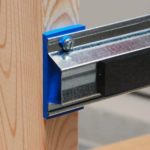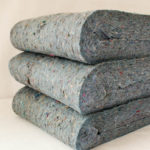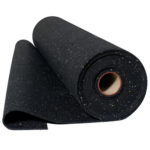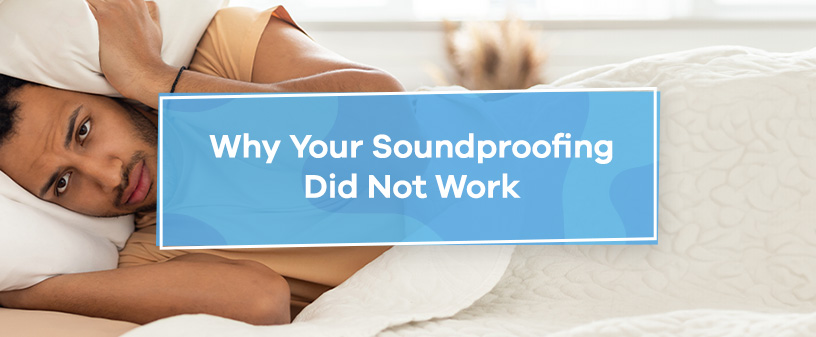
Soundproofing problems got you down? Did you recently complete a sound insulation project but still hear pesky noises? There are a moooltitude of reasons why soundproofing fails. Skipping research, wrong product choice or improper installation can lead to soundproofing issues.
Sometimes, bad soundproofing happens to good people. But never fear! Soundproof Cow is here to explain why your soundproofing did not work and help you fix it.
Reasons for Soundproofing Not Working
Below are a few common causes for less-than-stellar soundproofing.
1. Skipping Preparation Day
Research and planning are essential to the success of any project. Skipping research can result in incorrect soundproofing materials that do not solve your sound issues. Identifying the type of noise and its source is crucial to determine the best solution.
Before buying soundproofing materials, you need to assess the room’s acoustics. What are you trying to achieve? Do you want to stop noise from entering the space or reduce echo in the same room? The first step is understanding the difference between soundproofing and sound absorption.
Then, you will want to answer the following questions:
- What type of noise is it, and where is it coming from? For example, do you want to stop the noise of birds entering a space from outside or the buzzing of your AC unit?
- Is the noise structural, like HVAC sounds, or airborne, like your neighbor’s lawn mower?
- Does the sound come from one or many directions?
- What is the reverberation, decibel level and frequency of the noise you want to quiet?
Addressing whether the sound is low or high frequency can also help. You will likely feel (rather than hear) low-frequency sounds below 500 Hertz (Hz). Think of the rumbling of underfloor pipes. High-frequency sounds over 2,000 Hz may include fans and sirens. Human voices fall into the middle-frequency category or 300 Hz to 2,000 Hz.
The answers to these questions dictate which materials and soundproofing techniques work best. Assessing room acoustics alone can be daunting. A professional can perform an acoustic analysis to create a sound map of your space that indicates dead zones and high-sound transmission areas.
2. Choosing the Wrong Products
Knowing the construction details of the space comes in handy. Construction materials, duct placement, and insulation type determine which soundproofing products work best. When it comes to soundproofing materials, you get what you pay for. It is better to pay for quality, much like buying trusted brands versus generic products.
Trying viral DIY hacks or buying inexpensive materials might save a few bucks, but it costs more in the long run. Cheaper materials are less durable and have lower performance than high-quality options. You could end up spending more replacing or repairing them.
3. Believing in a Single Solution
You should believe in moooracles, but not so much that there is a one-product-fits-all soundproofing solution. Achieving excellent results needs a combination of products and techniques. Combine acoustic panels with Quiet Batt® Soundproofing Insulation for the ultimate noise reduction.
Elements like furniture arrangement, carpets, and curtains also contribute to noise control. Sound waves bounce off obstacles they encounter, making space layout a vital consideration. Rearranging furnishings to break up space changes the way sound travels.
4. Forgetting Flanking Noise
You identified a noise’s source and soundproofed the wall, so why can you still hear a noise? Sound finds ways to sneak into spaces even without apparent paths because sound travels the path of least resistance. Flanking noise or transmission occurs when noise enters an area through indirect means. For example, sound may infiltrate rooms through air ducts, bypassing your soundproofed wall.
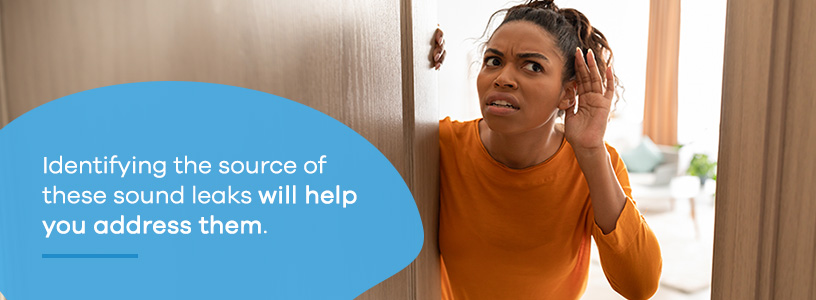
It is time to put on your Sherlock hat and get to investigating. Identifying the source of these sound leaks will help you address them. Flanking noise can originate from door gaps, electrical outlets, ductwork or floors.
You can solve noise transmission by:
- Sealing any gaps and plugging holes with expandable foam.
- Soundproofing ductwork and air vents.
- Adding flooring underlayments to reduce noise.
5. Installing Improperly
A soundproofing product is only as effective as its installation. It is about more than slapping on a few acoustic panels and hoping for the best. How you place, attach and seal materials contributes to soundproofing success.
Sound is smart — it finds unexpected ways to travel, including common studs in drywall. Resilient channels float the drywall away from these studs to maximize soundproofing power. However, this method is meaningless if it is not correctly sized and placed. Some solutions, like the isoTRAX® Soundproofing System, is easy to install.
6. Confusing Soundproofing with Noise Control
While soundproofing materials are extremely effective when properly installed, they are limited in their capabilities. Combining the right materials and techniques can go a long way toward quieting your space. From loud parties to barking dogs, some sounds are harder to mask.
7. Trying to Do It All Alone
Whether you need advice or analysis, acoustic experts exist to make your project a success! An acoustic ro can:
- Review your space to identify how echo and reflection impact sound quality.
- Evaluate the type of product and how much soundproofing material you need.
- Consider the role of building materials and structure in soundproofing.
- Measure the area to create a sound map for accurate solutions.
A professional can turn soundproofing into a scientific art form. Technicians consider factors such as:
- Decibels (dB): A decibel measures sound level on a logarithmic scale.
- Impact Insulation Class (IIC): This acoustic rating evaluates how a floor blocks vibrations.
- Noise Reduction Coefficient (NRC) ratings: The average sound absorption of a material.
- Sound Transmission Class (STC) product ratings: The STC measures how well a product absorbs sound.
Trust Soundproof Cow for Soundproofing Success
With decades of experience in acoustic insulation, Soundproof Cow is your trusted resource for all your soundproofing needs. From easy-to-install DIY options to custom-made solutions, we have it all!
Our goal is to make soundproofing as simple as possible for our customers. We thoroughly test every one of our products so you can be certain they are the best quality. Whether creating zen at home or blocking noise in a commercial space, the Soundproof Cow puts annoying noises out to pasture.
Browse our range of soundproofing materials or contact us to arrange a free acoustic analysis today.





